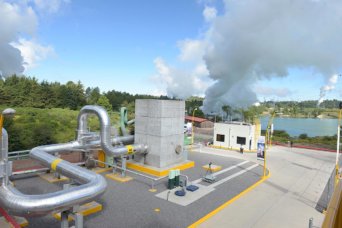- About
- Topics
- Story
- In-Depth
- Picks
- Opinion
- News
- Donate
- Signup for our newsletterOur Editors' Best Picks.Send
Read, Debate: Engage.
| topic: | Climate action |
|---|---|
| located: | Mexico, Italy |
| editor: | Magdalena Rojo |
Mexico, together with Italy, encouraged other countries to become inspired by their initiatives in environmental education at COP25 in Madrid.
While a lot has been written about Italy being the pioneer in incorporating environmental education into the curriculum at schools, Mexico has the lead in the Americas. The country has already incorporated an understanding of and respect for the natural world as a basic requirement of education into its constitution. It was the first step in a comprehensive plan of making environmental education mandatory and integrating it into all levels of education within the National Education System, both formal and informal.
The Centre for Training and Education for Sustainable Development under the Secretary of the Environment and Natural Resources (SEMARNAT) has been working on it.
There is also a network of NGOs called Educación Ambiental México that cooperates on designing changes in the education system. They suggest, for instance, that all subjects, including chemistry, physics, biology, and history, have environmental issues incorporated in the curriculum. For example, history books could include lessons on environmental history from Mexico and the world.
Various actors are working on the new environmental education law together with the Ministry of Education. Mexico has adopted a very complex approach and they intend to introduce their concrete plan on Earth Day in April 2020.
“We are convinced that environmental education is the route to meeting the Sustainable Development Goals, an essential tool to fight the climate crisis and can prompt a profound cultural change to contribute to our planet’s sustainability”, said Martha Delgado, Vice Minister of Global Affairs in Mexico’s Ministry of Foreign Affairs in Madrid. She also stressed that we need to look at the knowledge and the way of life of indigenous people in setting up climate education.
Mexico is one of the most biodiverse countries in the world. It is known that the most richly biodiverse places can be found in places where indigenous people live.
In the southern Mexican state of Oaxaca, indigenous people are growing organic food; even in the smallest villages, they separate trash, many local communities are exemplary in sustainable forest management, coffee producers plant their plants in the shade of trees and refuse monocultures. These are only some of the very concrete steps indigenous people take to protect the environment and co-live with it in harmony.
Indigenous people can teach us how to fight climate change. But they can also be an inspiration in how to see ourselves as part of nature, not above it. Bringing this perspective into environmental education could change the view of nature as a business opportunity for future generations.
Image: The Central Geotermoeléctrica Azufres III in Michoacán. 100% of the electricity produced in Michoacán comes from renewable sources. 90% comes from hydroelectric plants and 10% from the Azufres Geothermal Field./Presidencia de la República Mexicana - CC BY 2.0

